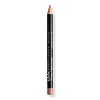What's inside
What's inside
 Key Ingredients
Key Ingredients

 Benefits
Benefits

 Concerns
Concerns

 Ingredients Side-by-side
Ingredients Side-by-side

Sorbitan Isostearate
EmulsifyingIsocetyl Stearate
EmollientPhenyl Trimethicone
Skin ConditioningPolyethylene
AbrasiveEuphorbia Cerifera Wax
Butyrospermum Parkii Butter Unsaponifiables
Skin ConditioningBeeswax
Emulsion StabilisingSimmondsia Chinensis Seed Oil
EmollientCaprylic/Capric Triglyceride
MaskingNylon-12
Octyldodecanol
EmollientPolyglyceryl-2 Diisostearate
EmulsifyingSilica
AbrasiveCopernicia Cerifera Wax
Hydrogenated Coconut Oil
EmollientTocopherol
AntioxidantVp/Hexadecene Copolymer
Stearalkonium Hectorite
Gel FormingStearyl Glycyrrhetinate
Skin ConditioningPropylparaben
PreservativePropylene Carbonate
SolventSorbitan Isostearate, Isocetyl Stearate, Phenyl Trimethicone, Polyethylene, Euphorbia Cerifera Wax, Butyrospermum Parkii Butter Unsaponifiables, Beeswax, Simmondsia Chinensis Seed Oil, Caprylic/Capric Triglyceride, Nylon-12, Octyldodecanol, Polyglyceryl-2 Diisostearate, Silica, Copernicia Cerifera Wax, Hydrogenated Coconut Oil, Tocopherol, Vp/Hexadecene Copolymer, Stearalkonium Hectorite, Stearyl Glycyrrhetinate, Propylparaben, Propylene Carbonate
Hydrogenated Polyisobutene
EmollientTridecyl Trimellitate
EmollientPolyisobutene
Phytosteryl/Octyldodecyl Lauroyl Glutamate
Skin ConditioningHydrogenated Styrene/Isoprene Copolymer
Squalane
EmollientPrunus Armeniaca Kernel Oil
MaskingPersea Gratissima Oil
Skin ConditioningSimmondsia Chinensis Seed Oil
EmollientPunica Granatum Seed Oil
EmollientTocopheryl Acetate
AntioxidantParfum
MaskingDiethylhexyl Syringylidenemalonate
Skin ProtectingPhenoxyethanol
PreservativeCaprylyl Glycol
EmollientCaprylic/Capric Triglyceride
MaskingPentaerythrityl Tetra-Di-T-Butyl Hydroxyhydrocinnamate
AntioxidantTocopherol
AntioxidantHydrogenated Polyisobutene, Tridecyl Trimellitate, Polyisobutene, Phytosteryl/Octyldodecyl Lauroyl Glutamate, Hydrogenated Styrene/Isoprene Copolymer, Squalane, Prunus Armeniaca Kernel Oil, Persea Gratissima Oil, Simmondsia Chinensis Seed Oil, Punica Granatum Seed Oil, Tocopheryl Acetate, Parfum, Diethylhexyl Syringylidenemalonate, Phenoxyethanol, Caprylyl Glycol, Caprylic/Capric Triglyceride, Pentaerythrityl Tetra-Di-T-Butyl Hydroxyhydrocinnamate, Tocopherol
 Reviews
Reviews

Ingredients Explained
These ingredients are found in both products.
Ingredients higher up in an ingredient list are typically present in a larger amount.
This ingredient is an emollient, solvent, and texture enhancer. It is considered a skin-softener by helping the skin prevent moisture loss.
It helps thicken a product's formula and makes it easier to spread by dissolving clumping compounds.
Caprylic Triglyceride is made by combining glycerin with coconut oil, forming a clear liquid.
While there is an assumption Caprylic Triglyceride can clog pores due to it being derived from coconut oil, there is no research supporting this.
Learn more about Caprylic/Capric TriglycerideThis oil comes from the seeds of the desert shrub called Jojoba. It is more commonly known as jojoba oil, a non-comedogenic oil.
Jojoba oil does not contain fragrance and has many fatty-acids, making it a great soothing ingredient.
It also contains Vitamin E, a great moisturizing ingredient. Vitamin E is also an antioxidant and protects your skin against oxidative damage.
This ingredient humectant properties, meaning it helps draw moisture from the air. This helps keep your skin hydrated.
While jojoba has antibacterial properties, it is only able to kill some strains of bacteria.
Studies also show it helps in wound healing. In fact, Indigenous cultures have used jojoba as a moisturizer and to help treat burns for centuries.
Fun fact: Jojoba oil similar to natural human skin sebum, so it has a great effect on dry skin. It is also promising with helping to regulate sebum production.
Due to its fatty acid content, Jojoba oil may not be fungal acne safe. We recommend speaking with a professional if you have any concerns.
Learn more about Simmondsia Chinensis Seed OilTocopherol (also known as Vitamin E) is a common antioxidant used to help protect the skin from free-radicals and strengthen the skin barrier. It's also fat soluble - this means our skin is great at absorbing it.
Vitamin E also helps keep your natural skin lipids healthy. Your lipid skin barrier naturally consists of lipids, ceramides, and fatty acids. Vitamin E offers extra protection for your skin’s lipid barrier, keeping your skin healthy and nourished.
Another benefit is a bit of UV protection. Vitamin E helps reduce the damage caused by UVB rays. (It should not replace your sunscreen). Combining it with Vitamin C can decrease sunburned cells and hyperpigmentation after UV exposure.
You might have noticed Vitamin E + C often paired together. This is because it is great at stabilizing Vitamin C. Using the two together helps increase the effectiveness of both ingredients.
There are often claims that Vitamin E can reduce/prevent scarring, but these claims haven't been confirmed by scientific research.
Learn more about Tocopherol